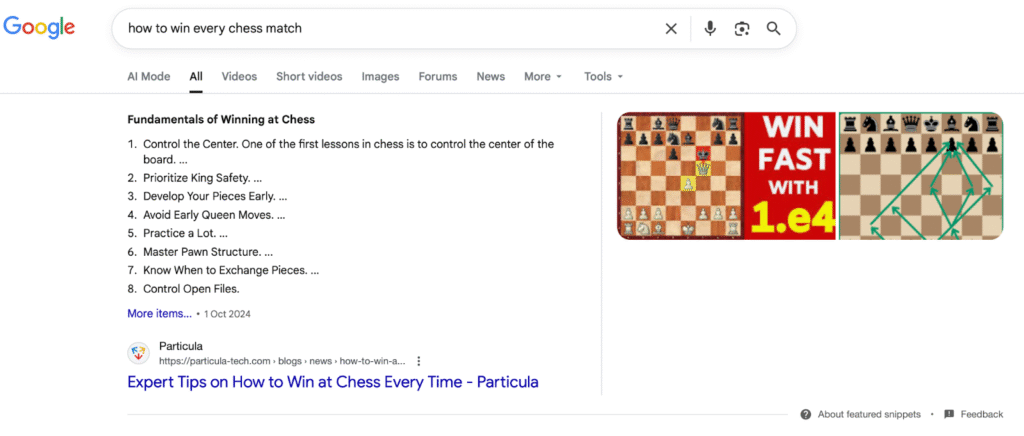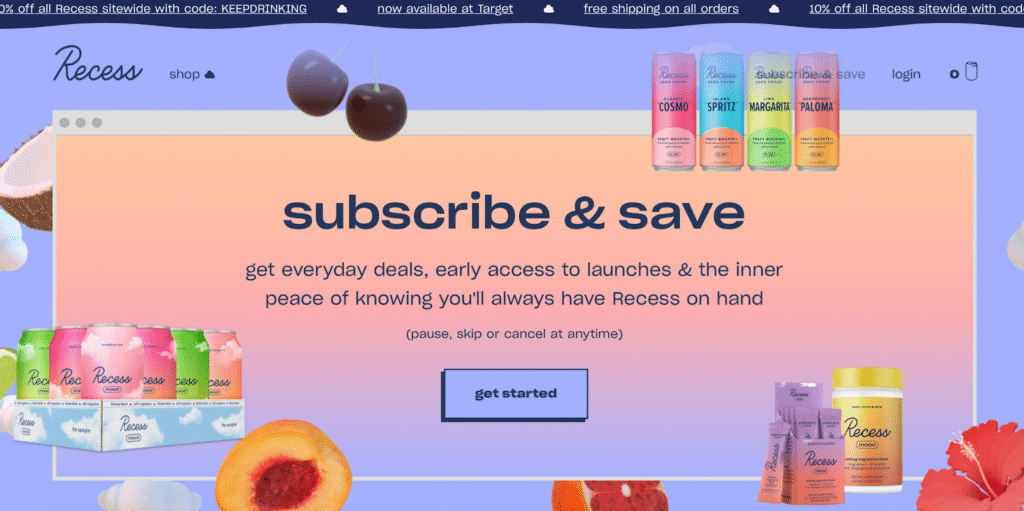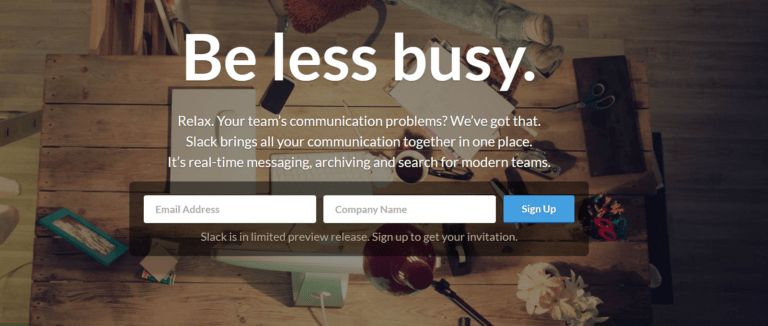You can have a fantastic product that people love, a killer marketing campaign, and still be completely invisible to new customers.
Take Particula for example; they raised $2M+ on Kickstarter for GoChess – an AI chessboard. The campaign became the most-funded chess project ever on Kickstarter, and it went viral. Anyone would be happy about this.

Then their marketing pulled out the data:
Most of the traffic was coming from people who had specifically searched for “GoChess” or “Particula” online. These were people who were already familiar with them.
But when it came to being
They’d built awareness, sure, but they hadn’t been discovered. And there’s a big difference between the two.
I’ve seen this same scenario play out and wreck the visibility of companies with real budgets, real customers, and solid product-market fit. The issue is rarely the quality of what you’re building. The real problem starts when someone searches for exactly what you sell, and you, yes you, are invisible at the moment it matters most.
Here are five things I’ve seen kill visibility for brands, and how each one can be turned around in just a few weeks with the right approach.
The 90% Branded Search Trap
After Particula’s Kickstarter campaign ended, their agency did something most brands never think to do: they segmented search traffic by query type.
What they found was telling. Branded searches made up most of the traffic, while searches like “smart chess board” or “how to” were almost nonexistent. That was a problem because people searching for “smart chess board” didn’t even know GoChess existed. They were using generic terms on Google, and GoChess wasn’t showing up.
If you don’t rank for “smart chess board,” you’re not even in the consideration set.
Most brands don’t distinguish between visibility driven by press coverage and visibility driven by search. You get featured in TechCrunch, traffic spikes, and “GoChess” searches shoot up on your dashboard. But that traffic comes only from people who read the article and typed in your name.
Once the press cycle fades, those searches drop to zero. Meanwhile, hundreds of people are searching every month for “smart chess board” — people who are ready to buy, and you remain completely invisible to them.
Here’s what the team at TCF did to fix it:
They took the time to rebuild Particula’s search presence around category keywords instead of brand terms.
In months 1 and 2, they focused on the technical side. They improved site speed since slow sites rank lower, restructured the site so Google could properly crawl the category pages, and rewrote all meta descriptions to target category keywords instead of brand variations.
Months 3 to 6 were all about content. They created three to four blog posts per month, each targeting a specific category search, such as:
- “Smart chessboards”
- “How to win every chess match”
They also rewrote product pages to rank for generic search terms while still converting visitors who landed there.
The results came quickly. Organic clicks increased by 278% in six months. Organic traffic and purchases quadrupled, and they began outranking established competitors for key category terms.
Here’s what you see when you search “how to win every chess match”:

Do this:
Open an incognito browser window and search for what you actually sell, not your brand name. Use the exact words a stranger would type: “project management software for small teams”, not “our company.” Check if you show up in the top 10 results. If you don’t, you’re invisible.
Now do this 5 more times with different variations:
- “best [your category] for [your customer type]”
- “how to choose [your product category]”
- [your category] vs [alternative solution]
Write down where you rank for each (or if you don’t rank at all). Pick the search term with the most commercial intent, the one where someone’s clearly ready to buy, not just researching.
Write one 1000-2500-word article answering that exact query. Use the search term in your title, first paragraph, and 2-3 subheadings. Don’t keyword stuff, just answer the question clearly. Add your own experience or data if you have it.
Publish it this week. Check back in 2-3 weeks to see if you’ve moved up in rankings.
Alternatively, if you want data, install a free trial of Ahrefs or SEMrush. Plug in your domain. Go to “Organic Keywords.” Sort by position. Look at what you actually rank for. If it’s all branded terms, you’ve confirmed the problem.
Export the list of non-branded keywords (if any exist) and double down on those topics.
The Platform Advertising Blacklist
Ben Witte launched Recess—a CBD-infused sparkling water—in October 2018 from his New York apartment.
First month sales hit 40X what he’d projected. 5000 orders, ready to scale.
Facebook rejected every ad he submitted. Instagram suspended the account within days. Google Ads banned them before they could spend a dollar.
Witte was a mobile strategist at AdRoll. He knew exactly how to run performance marketing campaigns. The platforms just wouldn’t take his money.
The CBD market hit $7.59 billion in 2023, but Meta and Google prohibit CBD advertising entirely. Doesn’t matter if your product is 100% legal hemp-derived with less than 0.3% THC. Doesn’t matter if you have lab results proving it. The platforms ban it.
Most DTC brands scale through Facebook retargeting, Google Shopping ads, and lookalike audiences.
CBD brands get none of that. Witte couldn’t outspend competitors on ads. So he had to build distribution channels that the platforms couldn’t shut down.
Here’s what Recess actually did:
For 18 months after launch, Recess spent $0 on paid ads.
Instagram was their primary engine, with 52,500+ followers built organically. They skipped CBD education content (ingredient breakdowns, benefits infographics). That feels medicinal and gets flagged. Instead, they posted aesthetic lifestyle content focused on “feeling good.” The vibe, not the molecule.
Email drove revenue.

They built 40,000 subscribers with 25% open rates, versus 14.5% industry average. Every email drove direct sales through a channel no platform could block.
They leaned into events. Sampling at Y7 Studio (hip-hop yoga chain), partnerships with WeWork Rising. When digital channels locked them out, they built awareness through real-world experiences.
Then Witte made a move that unlocked retail. He launched Recess Mood, magnesium-based, zero CBD. Same brand, different formulation. Major retailers were cautious about CBD regulations. Mood gave them something they could stock without legal concerns. It became 50%+ of sales and opened doors to 18,000+ retail locations.
Year one sales hit 50X projections. E-commerce grew 4X during COVID without ads. Today, Recess sits in 18,000+ retailers, doubling sales yearly.
Do this:
If platforms reject your ads, stop fighting. You’ll lose.
Pick one owned channel to build this week: an email list, a content engine, or a partnership with a complementary brand. Own your distribution before platforms own you.
The AI Answer Brand Visibility
In mid-2024, Will Melton, CEO of Xponent21, reviewed the agency’s analytics. Rankings appeared to be healthy. But traffic had fallen 40 percent over the past six months.
The reason is that 60% of Google searches now end with no click. AI Overviews, featured snippets, and knowledge panels provide the answer on the search results page immediately.
Research indicates that 75% of users do not scroll down the page past the AI-generated answer at the top of search results.
You may be ranked #1 for a keyword, but if the AI provides an answer to the search lobby that appears above the link, the answer will receive traffic, but you won’t receive an impression, let alone a click.
Xponent21, a digital agency located in Richmond, learned this firsthand. They conducted a good campaign for the Richmond Water brand that was well-known in the Richmond area.
However, when someone searched “how to rank in AI search results,” there was no link to Xponent21 at all. No links on Perplexity or ChatGPT. Not even within Google’s AI Overview.
Their CEO Will Melton undertook to change this in August 2024. They put out one macro guide titled “How to Rank in AI Search Results”, but they architected it specifically for how AI reads and parses content.
Direct answer in the first 50-100 words. Clear H2 headers for each section (because AI relies on header hierarchy to understand the organisation of content). Schema markup to tell search engines precisely what the content is about. Expert-backed claims with citations. No keyword stuffing, just straightforward, clear answers.
It went off.
Three weeks later, on the morning of their AI SEO webinar on August 28, 2024, they checked Perplexity AI. They were ranked #1 for “how to rank in AI search results.” A quick three weeks from invisibility to the first answer that AI surfaces.
The traffic data told the story: Search impressions spiked to 80X. Organic traffic was tracked at 18X. They became the cited authority whenever AI tools answered questions about AI search optimisation.
This is significant as new research from McKinsey reports that 50% of consumers are already using AI assistants to make their shopping and research decisions.
They are not visiting ten different sites to get the information they need; instead, they are just reading the answer that was generated by the AI.
If your brand is not on the trusted data set that AI tools rely on, you will be completely invisible to this audience.
Do this: Choose one question that your customers ask all the time.
Then write the clearest, simplest answer in the first paragraph of a new blog post. Organise the rest with clear subheadings. Publish it.
Then, test it: Ask ChatGPT, Perplexity, or the AI from Google that question. Does it cite you? If not, you’re not included in the most relevant training data.
Where Most Brands Actually Lose Customers
The gap isn’t in your content quality or ad spend. It’s in the searches you don’t own, the exact phrases your customers type when they have the problem you solve, right before they find a competitor instead.
Most agencies will sell you more traffic. We find out why the right traffic isn’t finding you first. Contact us and we’ll show you exactly where your visibility breaks down. No pitch, just the gaps.
Where Most Brands Actually Lose Customers
The gap is not in the quality of your content or your ad budget. It exists in the searches you do not own. The searches you own are the exact words your customers search when they have the problem you solve, just before they see your competitor.
Most agencies will tell you to get more visitors. But at Detutu Media, we find out why we can’t find the right visitors to your site. Contact us right now, and we will show you exactly where your visibility is failing. No pitch… just gaps.



